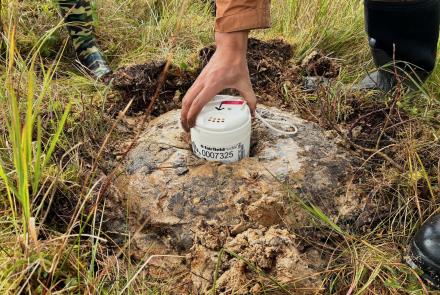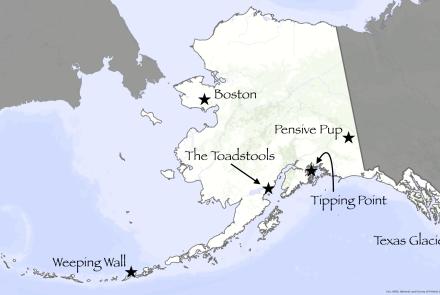Farthest North Grizzlies Among Alaska's Most Adaptable
Ken Kalchert exposed plenty of eyeball a few years ago when he described one of his most vivid memories in 20 years of working on the trans-Alaska pipeline. One day, while he sat in the cab of his 18-wheeler near Galbraith Lake, a large grizzly bear lumbered below.
"He was huge," said Kalchert, my landlord and the builder of my Fairbanks cabin. "I was scared even though I was in the truck."
The bear Kalchert saw was one of Alaska's most adaptable creatures, a brown bear sometimes referred to as the barren ground grizzly.
Brown bears can live almost anywhere in Alaska. People have seen them throughout the state except for on a few islands in Southeast, the Aleutians beyond Unimak Island, and islands of the Bering Sea. Brown bears away from southern coastal areas of Alaska are often called grizzlies, though scientists consider both the same species.
The grizzlies of the treeless far north thrive in the abbreviated arctic summer with far less than their coastal counterparts. Rather than fattening themselves at swollen salmon streams, far-north grizzlies spend much of their time gathering greenery, such as horsetails, sedges, starchy roots, wildflowers, and berries.
Northern grizzlies are usually found close to one of their main sources of protein, ground squirrels. In a Canadian study of barren ground grizzlies, one bear dug up and ate 357 ground squirrels in six weeks. Though the far-north grizzlies bulk up mainly on ground squirrels, they sometimes score on larger game. Biologist Peter Clarkson radio-collared grizzlies in Canada's Northwest Territories. As was detailed in a Canadian Geographic article "King of the Barrens," grizzlies killed caribou, moose and an occasional musk ox.
"They'll eat anything from the tubers of the smallest spring beauty to whales," said Harry Reynolds, a bear biologist with the Alaska Department of Fish and Game. "They're really well-suited to just about any environment."
While the encroachment of humans has cut down the range of brown bears considerably, the bears used to wander throughout most of the northern hemisphere. And the bear Clarkson called the Barren Ground grizzly doesn't stop roaming just because land turns to northern sea ice. When Clarkson and his assistant, Ilme Liepins, began tracking the radio-collared bears in northern Canada in 1987, they observed several grizzlies on the sea ice north of the Northwest Territories. One female bear and her two-year old cub spent almost two weeks on the ice. Clarkson wondered what the bears were doing on the ice, a more familiar haunt of the polar bear.
Bear researcher Mitchell Taylor got an answer a few years later when he spotted an adult male grizzly in Viscount Melville Sound, an expanse of sea ice more than 300 miles north of most of the other grizzlies. Taylor darted the grizzly from a helicopter and he found it was a burly adult male in good health. Again, he was struck with a question: what was a grizzly bear doing on sea ice?
Taylor followed the grizzly's tracks in the snow. The tracks eventually led to seal carcasses. Because he saw no polar bear tracks near the carcasses, Taylor guessed the grizzly killed the seals himself.
Even on an ice cap, the northern grizzly survives, although the bears are quite vulnerable. As Reynolds pointed out, far-north grizzlies have the lowest reproductive potential of any brown bears. Females in the Arctic don't have their first litter until age 7, on average, and then continue to have litters only every four years.
This low rate of reproduction combined with the bears' need for wide open places makes "the king of the barrens" as vulnerable as it is adaptable.



